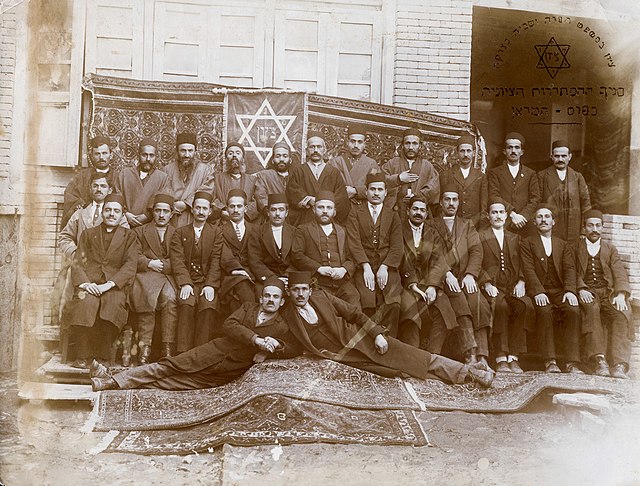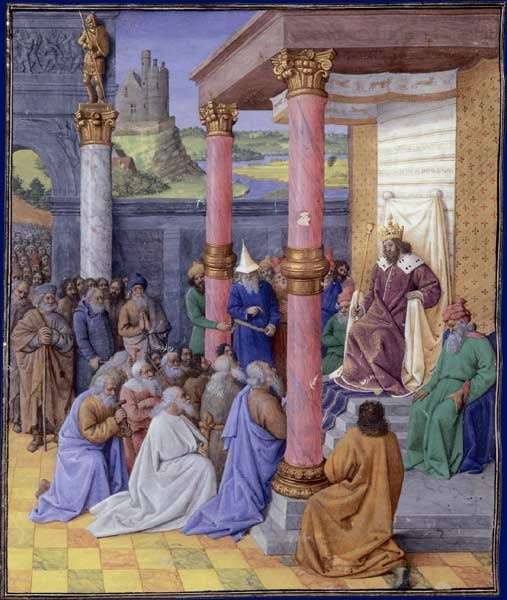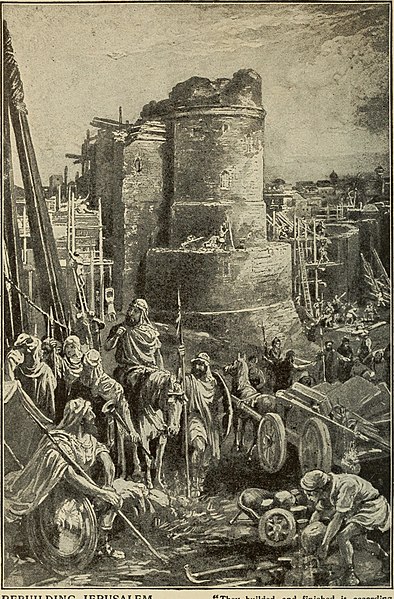Persian Jews or Iranian Jews constitute one of the oldest communities of the Jewish diaspora. Dating back to the biblical era, they originate from the Jews who relocated to Iran during the time of the Achaemenid Persian Empire. Books of the Hebrew Bible bring together an extensive narrative shedding light on contemporary Jewish life experiences in ancient Persia; there has been a continuous Jewish presence in Iran since at least the time of Cyrus the Great, who led the Persian army's conquest of the Neo-Babylonian Empire and subsequently freed the Judahites from the Babylonian captivity.
Gathering of the Zionist Federation in Iran, 1920
Cyrus the Great allowing Hebrew pilgrims to return to the Land of Israel and rebuild Jerusalem, painting by Jean Fouquet circa 1470
Hebrew version of Nizami's "Khosrow va Shirin"
Synagogue in Tehran. A postcard from the Qajar (1794–1925) period.
History of the Jews in Iran
The history of the Jews in Iran dates back to late biblical times. The biblical books of Chronicles, Isaiah, Daniel, Ezra, Nehemiah, contain references to the life and experiences of Jews in Persia. In the book of Ezra, the Persian kings are credited with permitting and enabling the Jews to return to Jerusalem and rebuild their Temple; its reconstruction was carried out "according to the decree of Cyrus, and Darius, and Artaxerxes king of Persia". This great event in Jewish history took place in the late 6th century BCE, by which time there was a well-established and influential Jewish community in Persia.
Jerusalem is rebuilt by Cyrus, Darius, and Artaxerxes. From "Our day in the light of the prophecy", 1921.
Samuel anointing David. Jewish messiah has to be anointed, and Cyrus is the only Gentile that has been referred to as Messiah in the Bible.
Cyrus the Great allowing Hebrew pilgrims to return to and rebuild Jerusalem
Hebrew version of Nizami's "Khosrow va Shirin".






